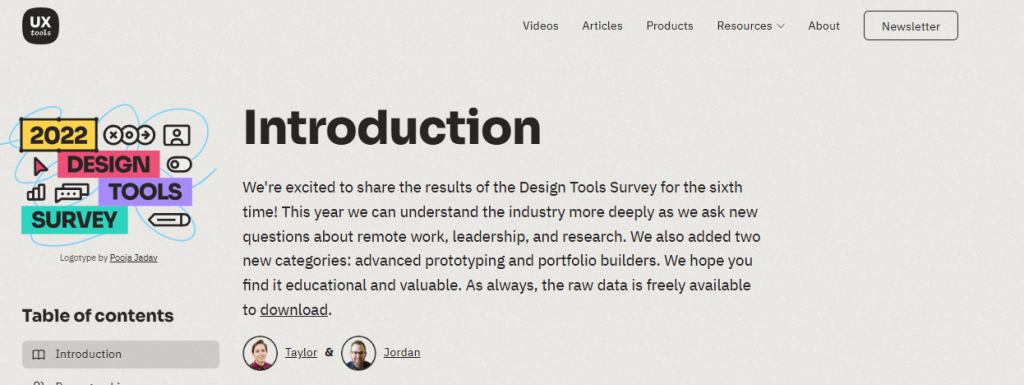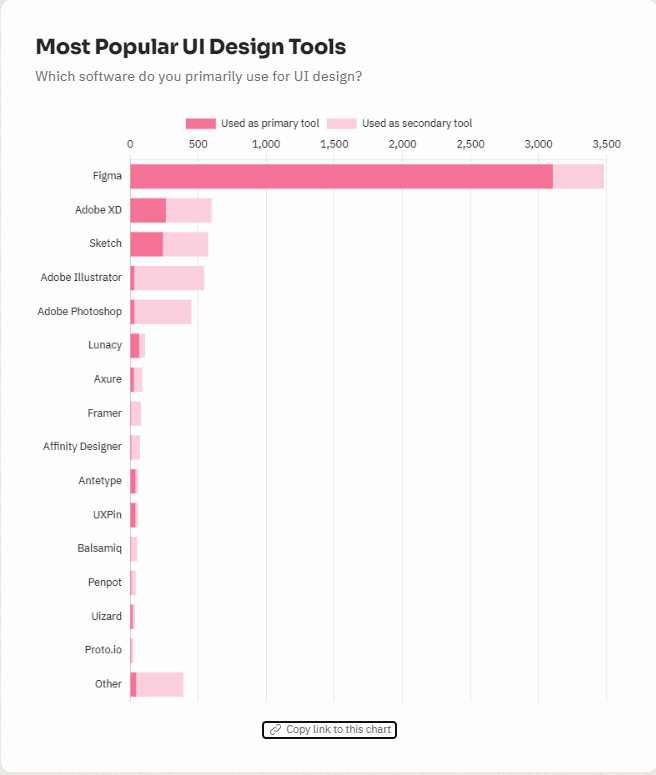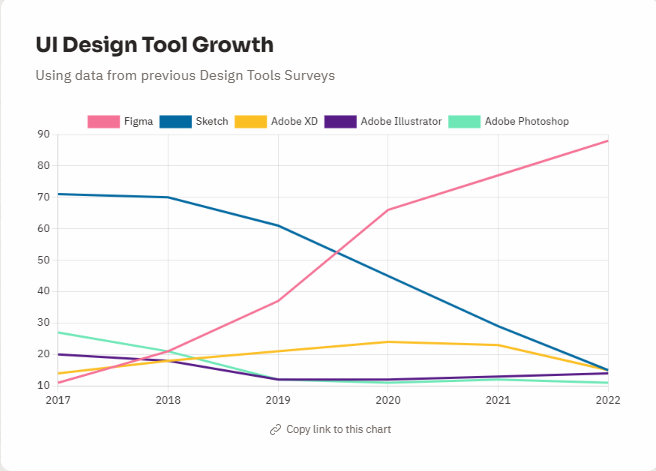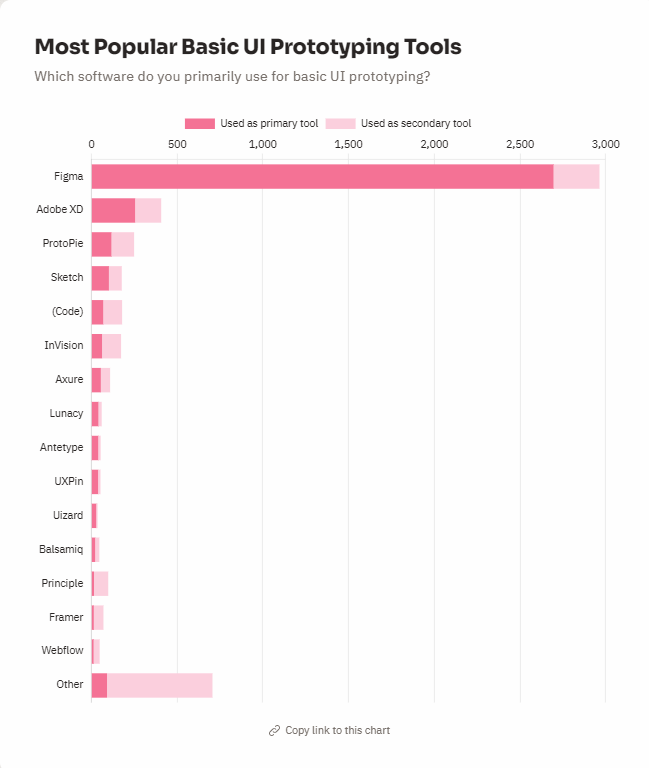2022 is gone, but these design trends aren’t. Today, I want to share my thoughts on some interesting UI/UX design trends from last year — ones that probably won’t change in 2023.
The Design Tools Survey
I came across an interesting survey where respondents submit their tools from around the world.

UXTools.co is an impressive website that does truly interesting surveys around UI and UX design. You can check out the entire survey on their website to know more about their work and if you’re curious about this survey’s broader results.
The first thing we’ll look at is their Most Popular UI Design Tools result:

As you can see, Figma is by far the market leader in the space, followed by Adobe and Sketch. Note that Figma has already been acquired by Adobe. We’ll have to see how that’s going to play out, but these two tools will probably merge eventually.
Our team at Flying Donkey uses Figma internally. It’s a fantastic piece of software, and it’s a big darling of the industry. That’s for a good reason: Figma listens to their customers and gives them what they want and need.
Moreover, Figma doesn’t only do UI design. It’s also great for prototyping — we’ll dig deeper into this shortly.
Going back to the survey, it’s impressive how Figma has grown over the past years:

In 2017, Figma had only around 10% of the market share. Fast forward to 2022 — it now has the lion’s share of the market.
And I highly support Figma usage. If you’re building or designing any SaaS products, use Figma. It’s a fantastic tool.
Basic Prototyping Using Figma
You’ll also find huge value in using Figma for prototyping to obtain feedback from customers, clients, and investors. Through prototyping, these stakeholders will experience your product even before it launches.

Basic prototyping is essentially having a page that looks like an app where you can try and click a few areas. This lets you test the product’s design and functionality, and you can do basic prototyping easily using Figma.
Now, if there’s “basic” prototyping, advanced prototyping also exists. It’s important to distinguish between the two because other tools provide a better prototyping experience than Figma. They offer more advanced features, animations, and designs, among others.
Still, we’re going to focus on basic prototyping because it’s what you’ll need for most SaaS products. It’s a truly fantastic way to get your ideas on paper and convey them to developers.
Let’s look at how respondents see Figma in terms of basic prototyping:

As you can see, Figma still ranks at the top — it’s the market leader not only for design but also for basic prototyping.
And I don’t see that changing in the future.
Even if you’re not using Figma, you should do prototyping in your SaaS business. It’s an extremely valuable part of the industry, and it accelerates your feature development.
It does away with all those lengthy documents, back-and-forth calls and messages, and more. People interpret words differently, but they mostly interpret pictures in similar ways. Prototyping allows you to communicate better through pictures instead of words.
The Bottom Line
Overall, Figma will remain at the top of the rankings. That may or may not change anytime soon, but it’s definitely something you should use in your SaaS business. Also, remember that prototyping matters. It helps you convey your vision to your developers and speeds up the entire process of product development.




